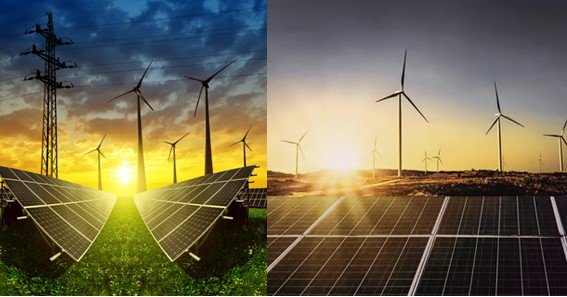Renewable energy sources such as solar, wind, and hydropower are key to reducing our dependence on fossil fuels and combating climate change. At the heart of these technologies is the generation of electricity—clean, sustainable power that can be harnessed without depleting natural resources. Understanding how electricity is produced and utilized in these systems is crucial for advancing a greener future.
How Electricity is Generated from Renewable Sources
1. Solar Power: Harnessing the Sun
Solar panels convert sunlight directly into electricity through the photovoltaic (PV) effect. When sunlight hits a PV cell, it excites electrons, creating an electric current. This direct current (DC) is then converted into alternating current (AC) for use in homes and businesses. Solar power is one of the fastest-growing renewable energy sources due to its scalability and decreasing costs.
2. Wind Energy: Capturing Air Currents
Wind turbines generate electricity by converting the kinetic energy of wind into mechanical energy. As the wind turns the turbine blades, a generator converts this mechanical energy into electricity. Wind power is highly efficient and has become a major contributor to the global electricity grid, especially in regions with strong, consistent winds.
3. Hydropower: Utilizing Water Flow
Hydropower is the oldest and most widely used form of renewable energy. It generates electricity by capturing the energy of flowing water, typically from rivers or dams. The water’s movement spins turbines connected to generators, producing electricity. Hydropower plants can provide large-scale, reliable electricity, often serving as a backbone for other renewable sources.

FAQ
- How does solar energy generate electricity?
Solar panels use the photovoltaic effect to convert sunlight directly into electricity, which is then converted from DC to AC for practical use. - What role does wind energy play in electricity generation?
Wind turbines capture the kinetic energy of wind, converting it into mechanical energy, which is then transformed into electricity by a generator. - Why is hydropower considered a reliable renewable energy source?
Hydropower uses the consistent flow of water to generate electricity, providing a stable and continuous energy supply, often supporting other renewable technologies. - How do renewable energy sources contribute to reducing carbon emissions?
Renewable energy sources generate electricity without burning fossil fuels, significantly lowering carbon emissions and other pollutants compared to traditional energy sources. - What are the challenges of integrating renewable energy into the grid?
Challenges include the variability of sources like wind and solar, the need for energy storage solutions, and the development of infrastructure to manage fluctuating power supply.










